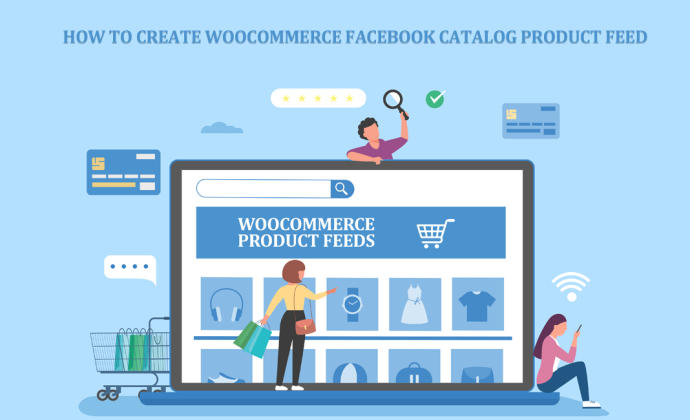Over one-third of the world’s population uses Facebook. No wonder it’s one of the top marketing channels for any business.
And eCommerce gets extra love on Facebook! They offer a suite of features just for online stores, making it easier than ever for store owners like you to sell and thrive.
Let’s quickly check some Facebook statistics.
- Facebook has over a staggering 3 billion monthly active users.
- Around 67% of social media marketers choose Facebook for their marketing efforts.
- Facebook ads can reach a massive audience of 2.249 billion people globally.
- As of 2023, there are over 10 million active advertisers on Facebook.
- Facebook ads can reach about 33.3% of the global population aged 13 and above.
- In 2022, Meta (formerly Facebook Inc.) made more than $113 billion in advertising revenue.
- In 2023, marketers prefer Facebook over other social media platforms because it gives them the best return on investment.
Therefore, you can reach an enormous audience for your WooCommerce store and grow your conversions through Facebook. To get the best out of your eCommerce/WooCommerce promotions on Facebook, the most important element you will need is a Facebook product feed.
In this article, we will discuss what a WooCommerce product feed for Facebook is and walk you through the process of creating a Facebook product catalog feed.
But first, let’s find out the Facebook eCommerce features where a product feed is required.
Facebook eCommerce Promotional Tools
Besides having an official business page and running individual ads, Facebook offers way more for eCommerce stores. Facebook makes it possible for your shoppers to enjoy a full eCommerce buying experience without even leaving the platform.
Let’s discuss different Facebook eCommerce tools.
Facebook Shop
We are all familiar with a Facebook business page. Previously, Facebook allowed eCommerce businesses to upload and display their product along with a few details on the Shop page in the form of product galleries.
Now, the platform allows you to create a fully functioning storefront within your business page. The Shop page now has product and promotional sliders and category menus in the header section.
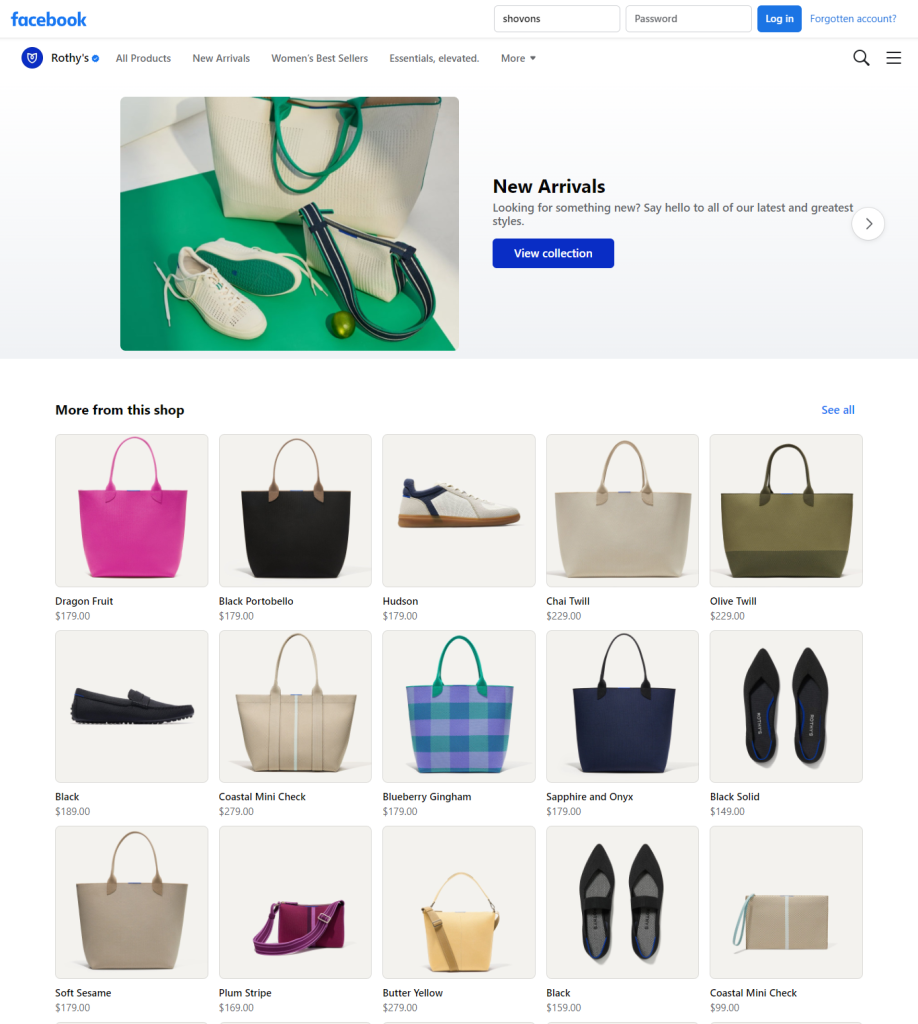
Besides that, you can also display products by different features and categories in the body section as well. The product detail page contains information such as description, shipping details, and image gallery.
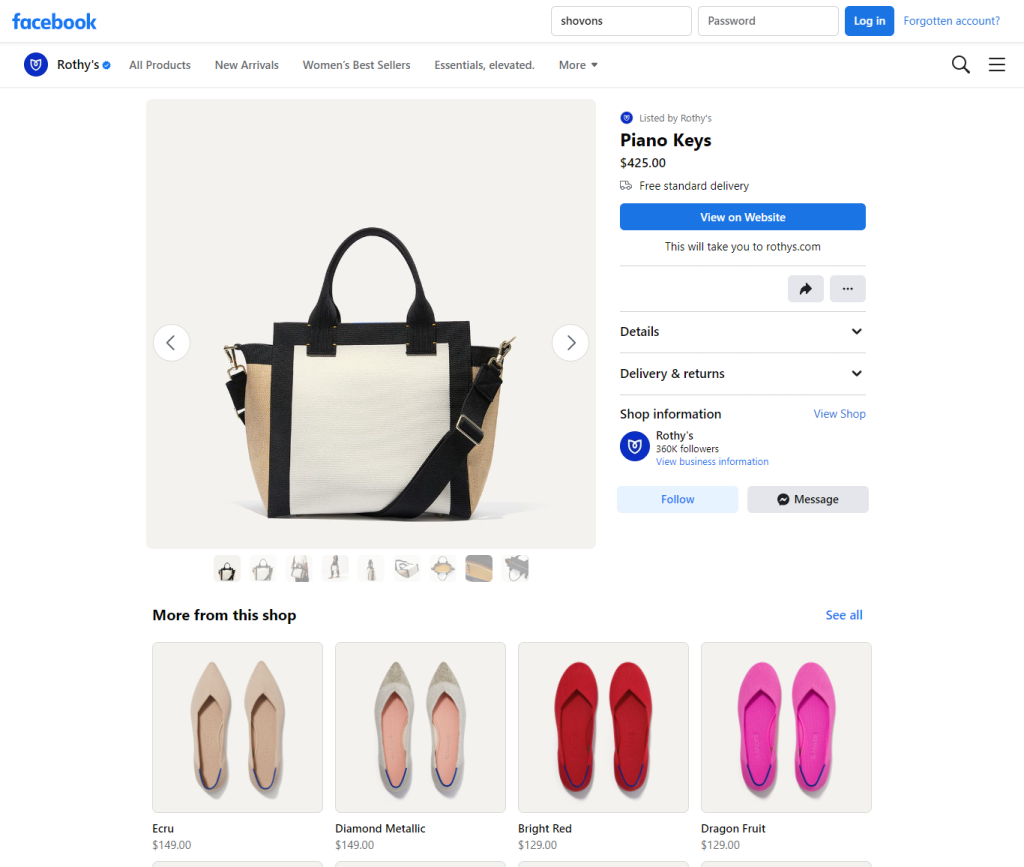
You can redirect your users to your WooCommerce product page or let them contact you through Messenger. You can also allow your customers to checkout directly from Facebook.
What Facebook will display on your Facebook Shop and product detail pages will entirely depend on the Facebook product feed you upload to Facebook business manager (currently Meta Commerce Manager).
Facebook Marketplace

Facebook Marketplace is one of the most popular places online for buying and selling products locally. Anyone can add and display their products and reach their local area customers.
It used to be a peer-to-peer platform, but now Facebook has opened the platform for eCommerce retailers as well. You can upload your Facebook WooCommerce product feed to Marketplace and list your products in bulk.
Marketplace alone receives over a billion visitors every month. Therefore, it’s a great platform for you to target and reach your local audience.
Facebook Dynamic Ads

In the simplest words, dynamic ads mean you are reaching out to the specific customers at the right time who will buy your products. You won’t need to manually create these ads one by one.
Your Facebook product feed does the heavy lifting. Facebook automatically generates dynamic ads with your latest offerings from the provided product feed for Facebook. Imagine having an army of elves crafting customized ads around the clock!
These ads reach people based on their browsing habits and interests, like showing running shoes to marathon enthusiasts and cozy sweaters to winter lovers. Think of it as having a mind-reading AI whispering product suggestions in your customers’ ears.
Prices, images, and descriptions automatically update, so your ads are never stale. Overall, Facebook dynamic ads can significantly boost your traffic and conversions.
As you can see, to enjoy all these Facebook eCommerce features, you will need Facebook product catalog feeds. Let’s find out what a Facebook product feed is.
What is a Facebook Product Feed?
A product feed is most commonly a spreadsheet file that contains the list of your WooCommerce store products along with their characteristics, such as titles, descriptions, shipping information, prices, categories, etc. A product feed is used for efficiently exporting and uploading products in bulk to various channels.
Similarly, Facebook allows retailers like you to upload Facebook product feed files to showcase your products on the platform. Here’s an example –
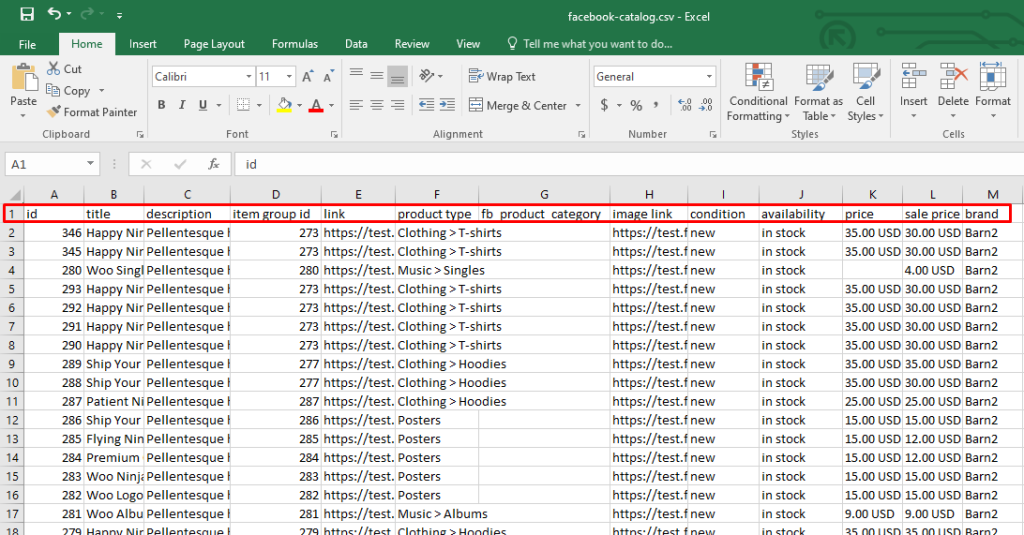
The column headers in the example (red-marked) are characteristics of your WooCommerce products. In a product feed, these are called attributes.
Every channel has its own set of guidelines and a list of attributes you need to follow when creating a feed. Following are the WooCommerce Facebook product feed attributes for different platforms.
List of Attributes for Facebook Shop
- id
- Title
- Description
- Availability
- Condition
- Price
- Link
- Image_link
- Brand, MPN, or GTIN (include at least one)
Attributes for Marketplace (USA only)
- id
- Title
- Description
- Availability
- Inventory
- Condition
- Price
- Link
- Image_link
- Brand, MPN, or GTIN (include at least one)
- Google_product_category
Attributes for Page Shop, Instagram Shop, Dynamic Product Feed Facebook
- id
- Title
- Description
- Availability
- Condition
- Price
- Link
- Image_link
- Brand, MPN, or GTIN (include at least one)
How to Create a Facebook Product Feed
You can create a product feed file in various formats such as CSV, TSV, Excel (XLSX), Google Sheets, or XML (RSS/ATOM).
As you can see in the example we gave earlier, it’s a spreadsheet file. Therefore, you can create a WooCommerce product feed Facebook using a spreadsheet tool like Microsoft Excel, Google Sheets, etc., or you can use text and code editors for creating XML files.
However, manually creating such files is prone to loads of errors and time-consuming. Let’s quickly review why it’s not a good idea to create a Facebook product feed manually.
Challenges of Creating Feed Manually
Creating a Facebook product feed manually might sound like a simple task at first, but it’s actually a recipe for trouble. Here’s why:
Time-Consuming and Error-Prone
Imagine entering endless product details by hand. It’s tedious, time-consuming, and prone to typos, missing info, or outdated prices. This can result in Facebook rejecting your product feed or, even worse, displaying incorrect information to your customers.
Limited Scalability
As your inventory grows, manually updating the feed becomes a nightmare. It’s like running a bakery with a tiny oven – you can’t keep up with the demand for fresh treats!
Inefficient Ad Targeting
Without the automation of a well-structured feed, your ads won’t reach the right audience. It’s like trying to sell cupcakes to pizza lovers.
Missed Opportunities
You might miss out on valuable features like dynamic ads and retargeting, which rely on a dynamic feed to work their magic. Think of it as throwing away precious ingredients that could make your bakery even more delicious!
Technical Headaches
Formatting errors, compatibility issues, and unexpected bugs can turn your manual feed into a technical nightmare.
Using an Automated Solution
Instead of wasting time and risking errors, you should look for an automated e-commerce feed management tool. There are several product feed management tools/plugins available for WooCommerce, and among them, the best we found is CTX Feed. CTX Feed is the most error-free and optimized WooCommerce Facebook product feed plugin.
This plugin can automate almost the entire feed generation and update process for you. It comes with a pre-made template for Facebook that knows all the necessary formats, guidelines, and attributes.
The plugin also automatically collects all your product information and pastes it according to the attributes in the feed file.
Moreover, the plugin also automatically updates your feed files at your set intervals and supports uploading the feed file through URL/SFTP/HTTP. That means you need to create and connect the feed once, and the plugin will automatically manage your product listing on Facebook from there on.
The plugin also has advanced features such as automatically excluding stock-out products or incomplete products, mapping categories according to Google or Facebook, etc. Overall, this is your one-stop solution for creating and managing Facebook product feeds.
Let’s quickly check out how to create a Facebook product feed using the plugin. You can try it out by installing the free version from the WordPress plugin repository.
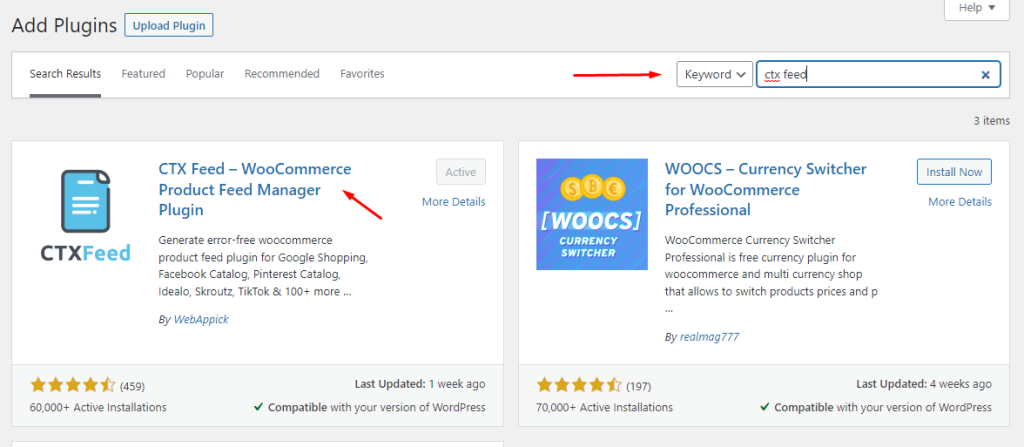
After activating, click CTX Feed >> Make Feed to start the process.
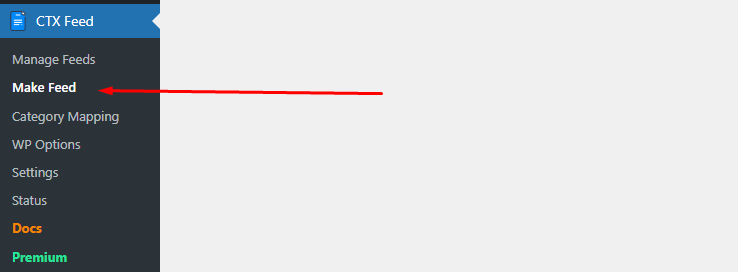
The Template dropdown field is the treasure trove. It contains built-in templates for over 130 channels. Select the Facebook template from there and select your file type.
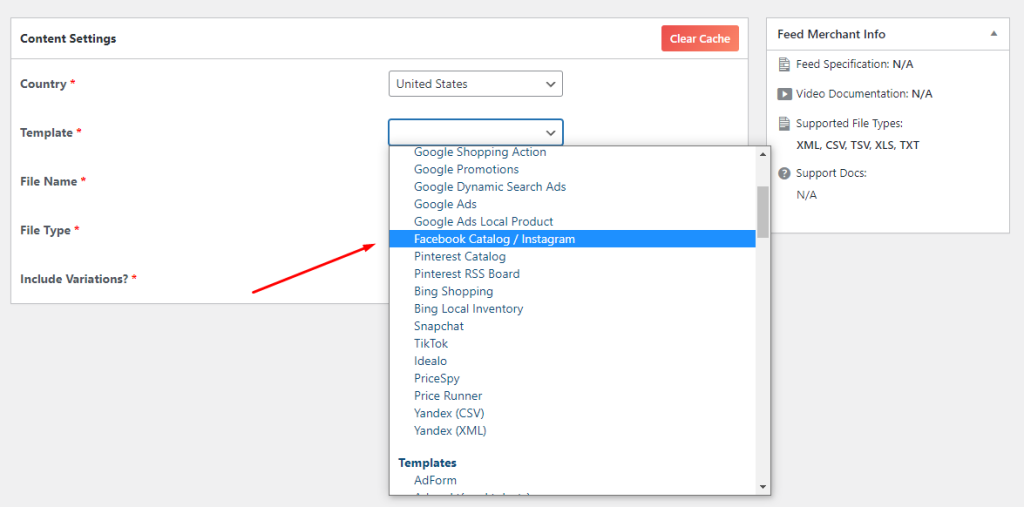
The plugin will automatically populate the necessary attributes at the bottom for you. All you need to do now is hit the generate button.
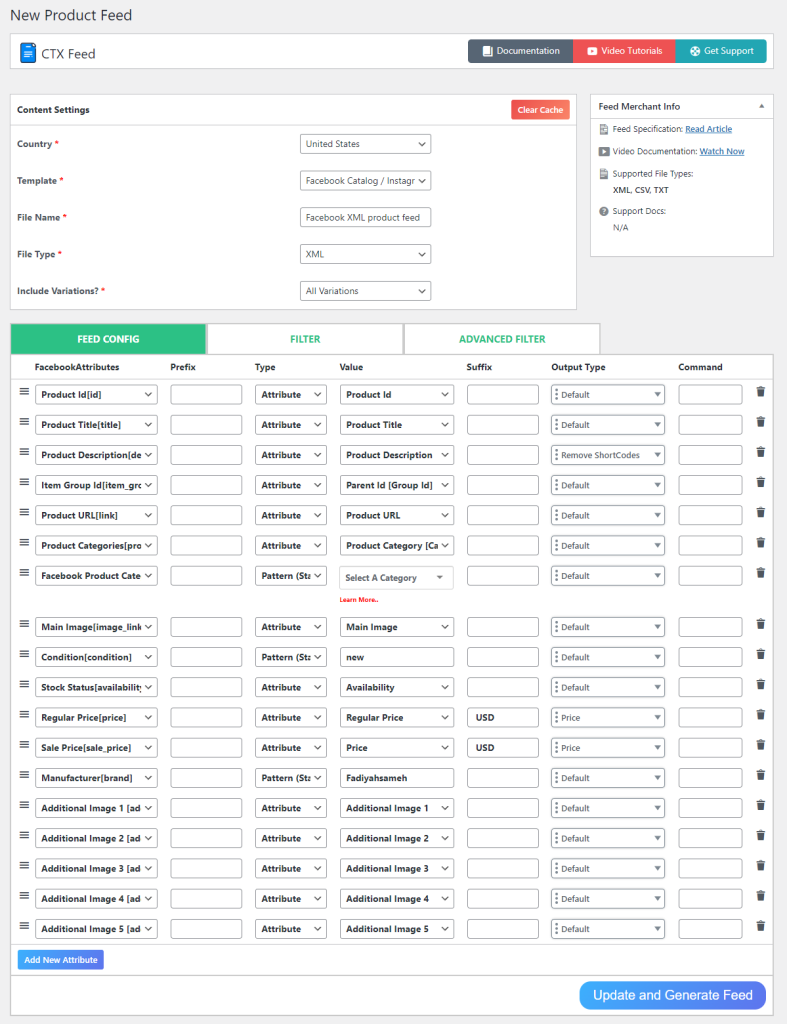
You can also filter your feed by different conditions or exclude out-of-stock or incomplete products from the filter settings.
You can find this new feed on the Manage Feeds page. Along with other feed settings, you can set automatic updates from this page.
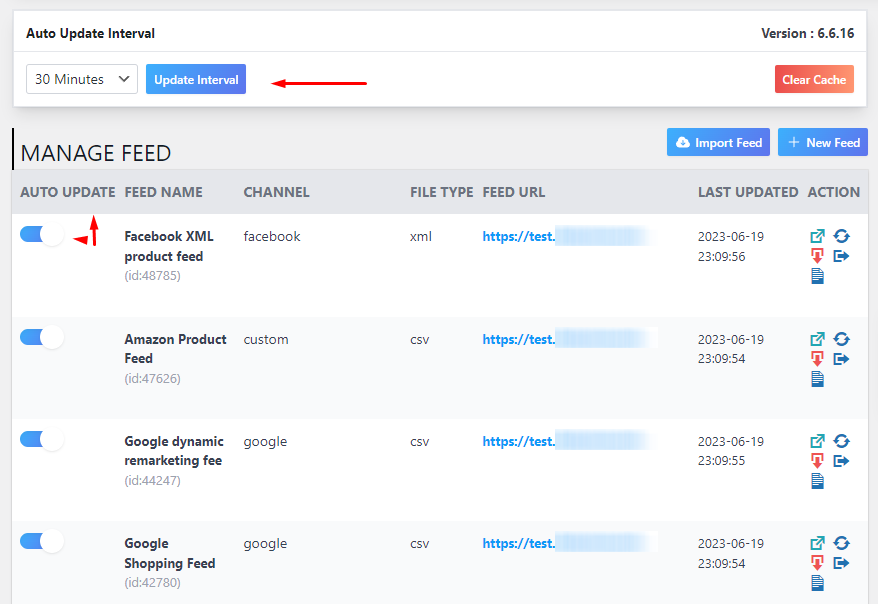
How to Upload and Showcase Products on Facebook
To add product feed to Facebook, you need to log in to Meta Commerce Manager. This platform manages all your product listings for both Facebook and Instagram.
The first step is to create a catalog. If you are new to the platform, you will see a similar screen. Click the “Get Started” button to begin the process.
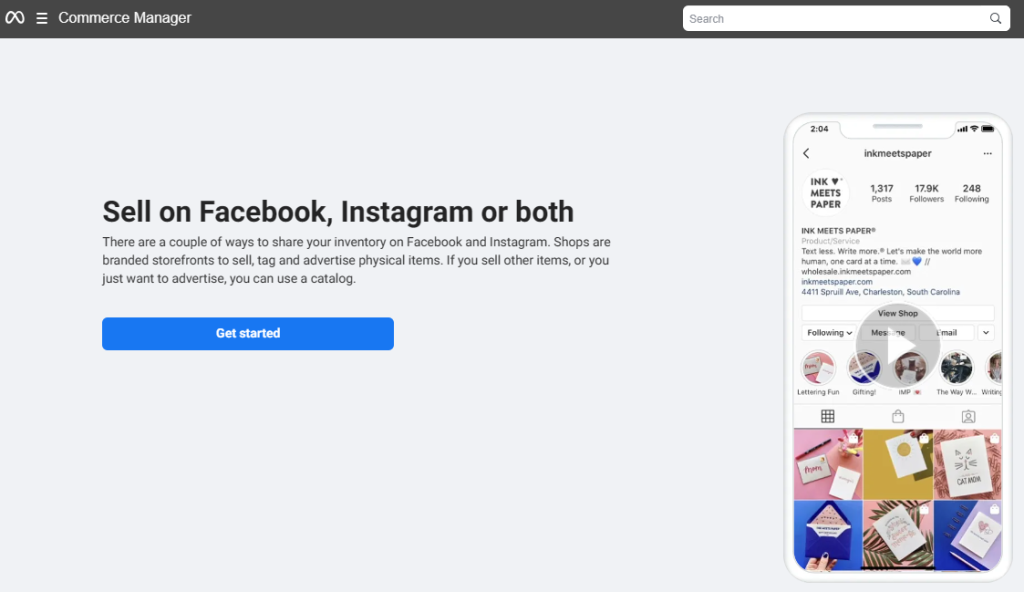
Select the Catalog option.
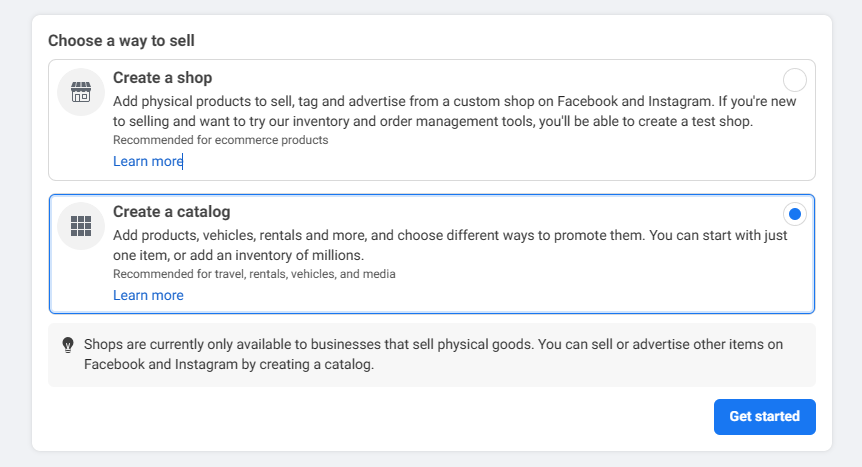
As you are an eCommerce/WooCommerce store selling products online, select the following options.
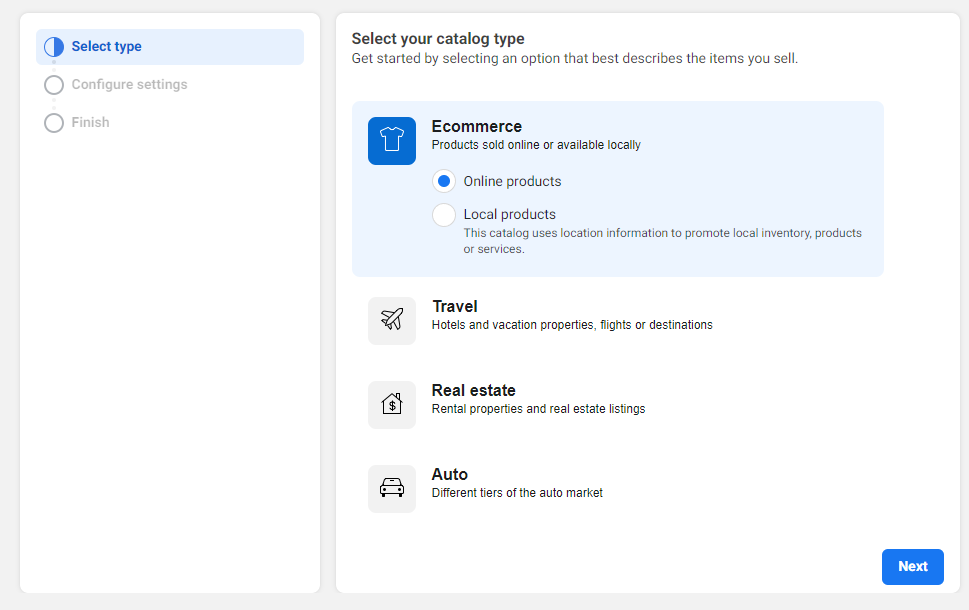
Select Upload Product Info and click the Create button to create the catalog. This catalog is empty because we haven’t uploaded any Facebook product feed yet.
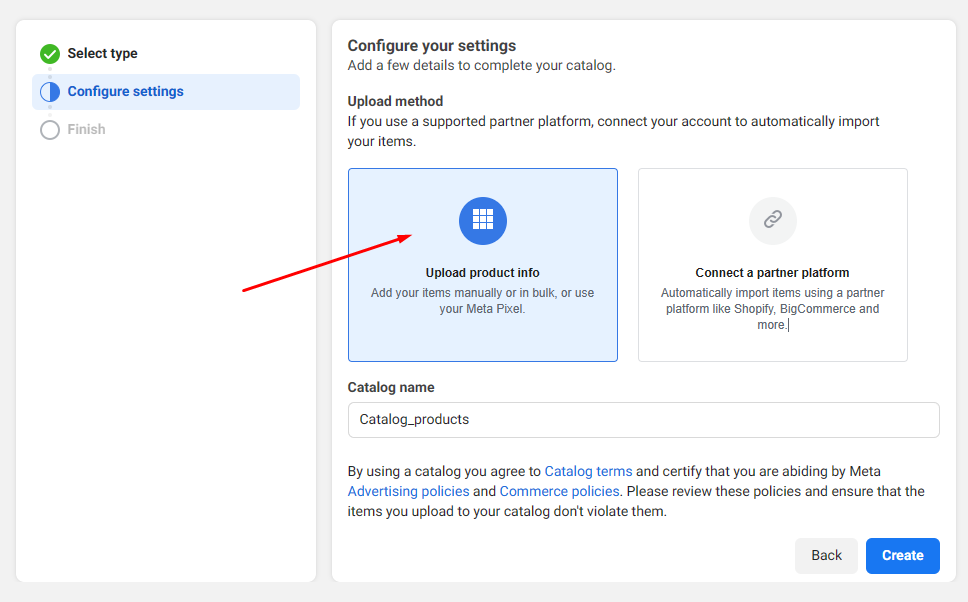
From the left-side Catalog menu, click on Data Sources, and from there, select the Data Feed option.
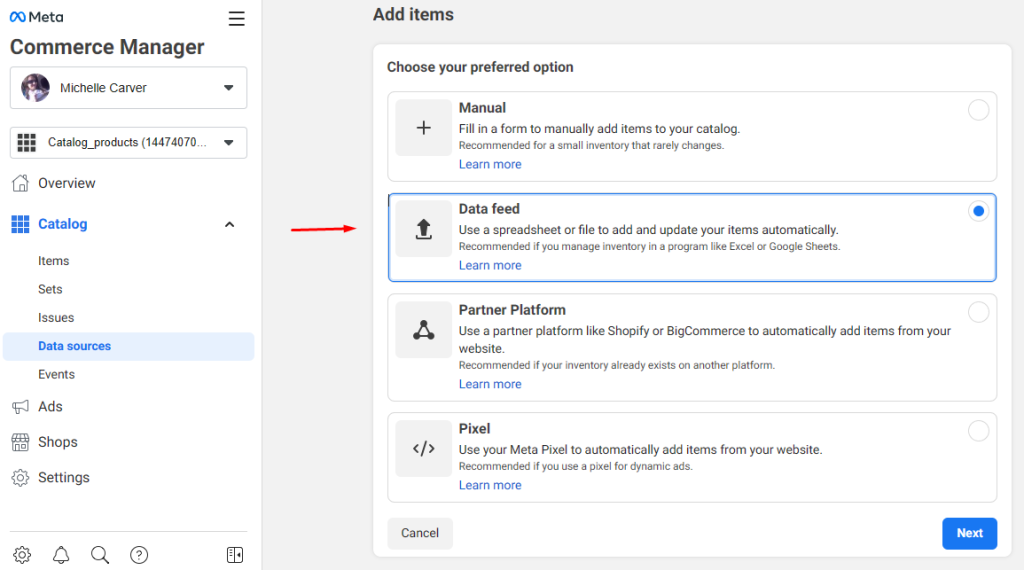
We are uploading a spreadsheet, so we will select yes.
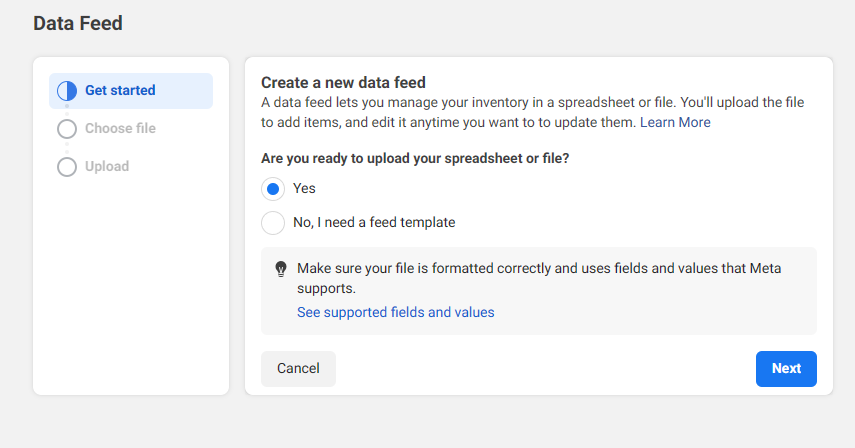
You can download and upload your feed file or connect a Google Sheets file. But the best option is the URL connection.
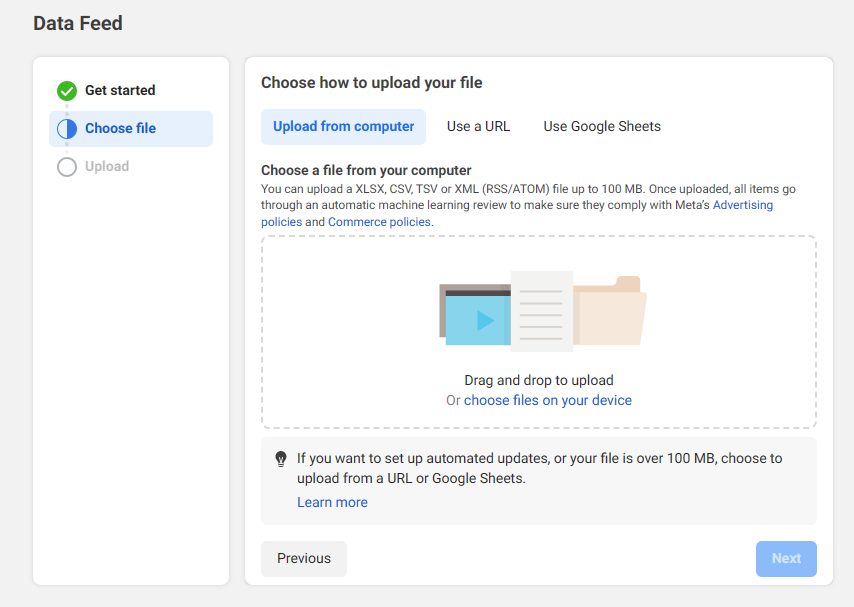
Go back to CTX Feed >> Manage Feeds and copy your Facebook product feed link.
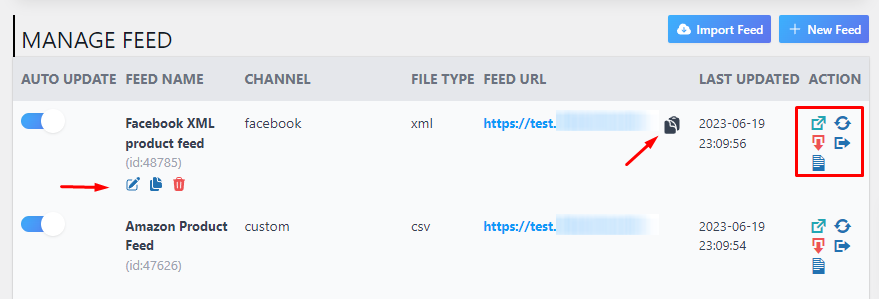
Paste it in the following box and set your update frequency.
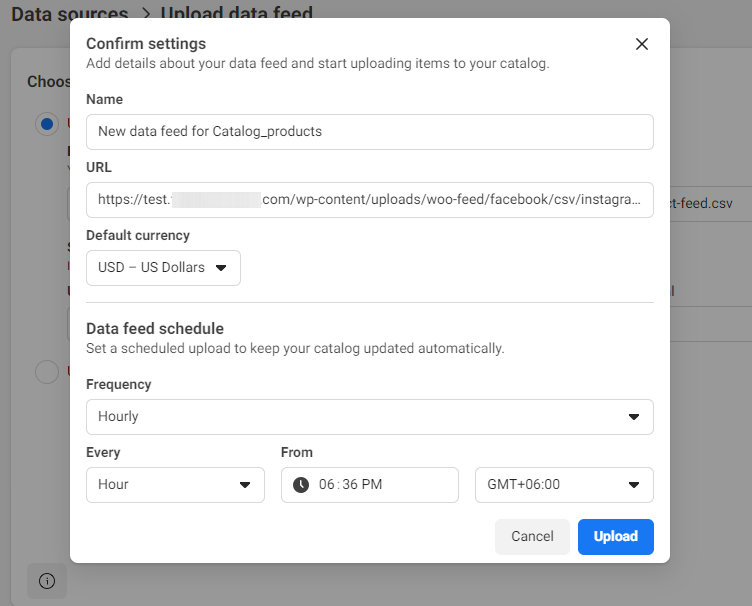
CTX Feed and Meta Catalog Manager work together to keep your product info fresh on Facebook and Instagram. CTX Feed scans your WooCommerce store for any updates you make to products, like changing descriptions or prices. It then updates your feed files for various channels.
Now, the Catalog Manager steps in. At your set update frequency, it checks the Facebook product feed URL to ensure all the changes caught by the CTX Feed are accurately reflected in your Facebook product listings.
In a nutshell, CTX Feed handles the overall update process for your feeds, while Catalog Manager focuses on confirming and showcasing these changes specifically on Facebook and Instagram.
Benefits of Using Facebook Shopping Feeds for WooCommerce Store
Here’s how Facebook product feed can elevate your online business:
Enhanced Product Visibility
Facebook shopping feeds significantly increase the visibility of your WooCommerce store products on the platform. As a result, this ensures that a larger audience can discover and explore your offerings.
Broader Audience Reach
Integrating these feeds enables you to reach a broader audience, attracting potential customers who may not have otherwise come across your store. This expanded reach can lead to increased brand awareness and customer acquisition.
Effortless Product Updates
The seamless connection between WooCommerce and Facebook through these feeds allows for easy and quick updates to your product information. This ensures that customers always see accurate and current details about your offerings.
Convenient Shopping Experience
By leveraging Facebook product feed files, you provide a convenient and direct shopping experience for users. Customers can browse, explore, and make purchases without leaving the social media platform, streamlining their interaction with your brand.
Visually Appealing Storefront
The ability to showcase a variety of products on Facebook allows you to create a visually appealing storefront. This not only captures the attention of your audience but also increases the chances of engagement and conversion.
Streamlined Transactions
The integration of Facebook feeds simplifies the shopping experience for customers. This reduction in friction can lead to more seamless transactions, contributing to a positive overall customer experience.
Targeted Advertising Opportunities
Utilizing Facebook shopping feeds opens up opportunities for targeted advertising. You can tailor your ads to specific demographics, reaching the right audience and maximizing the effectiveness of your marketing efforts.
Scalability Without Overhead
As your business grows, the adaptability of Facebook product feeds ensures that your online store can scale effortlessly. This scalability is achieved without adding extra workload, allowing you to manage expansion efficiently.
Wrap up
Facebook product feed offers a powerful way to amplify your WooCommerce store’s visibility, drive sales, and foster customer loyalty. By harnessing this integration, you can reach the right shoppers, deliver personalized experiences, and make data-driven decisions to elevate your eCommerce success.
Remember, shopping feed optimization enhances visibility, accuracy, and performance across online shopping platforms. Therefore, optimize your Facebook product feed to increase your conversions and overall business growth.


